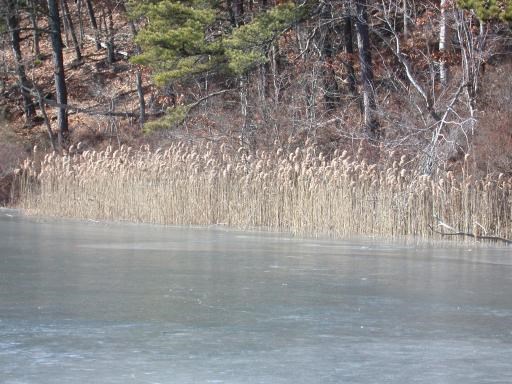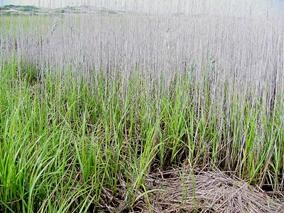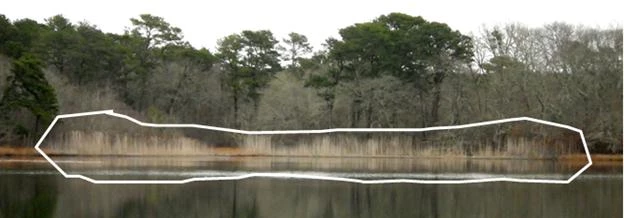
Drowning of Phragmites through manual removal of stems
While Phragmites is somewhat tolerant of complete immersion, prolonged flooding is deleterious - especially when stems (which act as "snorkels" to provide oxygen in the atmosphere to the roots) are severed underwater. During 2002-2004, the Seashore experienced very high levels of precipitation and, consequently, very high water levels in its freshwater kettle ponds. At five of these ponds Phragmites stems were repeatedly cut just a few inches below the pond bottom in an attempt to drown out the root systems. Thanks to the abnormally high water levels, the effort proved quite successful with a ~90-100% reduction in live Phragmites.


Hatches Harbor salt marsh is located at the northern end of Cape Cod in the town of Provincetown. In 1930, in an attempt to control nuisance mosquito populations, an earthen dike was constructed that severed approximately half the marsh from tidal influence. Shortly thereafter, the Provincetown Municipal Airport was built within the diked floodplain. Hydrologic and biogeochemical changes that occurred after the diking severely impacted the structure and function of the upstream marsh. Salinities plummeted to near freshwater, allowing the establishment and rapid expansion of Phragmites. In 1998, four large rectangular box culverts were built into the dike to facilitate seawater flow into the restricted marsh. Since that time, Phragmites has diminished substantially, making way for the expansion of native salt marsh taxa such as smooth cordgrass (Spartina alterniflora) over many acres of degraded marsh.
Chemical control
The last option for Phragmites control involves the use of herbicide. While other control methods (i.e., non-chemical) are always considered first in treating exotic vegetation, chemical control is sometimes the only feasible means of doing so. At the Seashore, we have used glyphosate (the active ingredient in the commercially-available Rodeo™) to treat Phragmites in freshwater wetlands and kettle ponds. This herbicide is very effective and degrades rapidly into harmless compounds. Herbicide application techniques themselves are also quite varied, ranging from "clip and drip" to broadcast spraying. Moreover, the timing must be right with respect to both weather conditions and plant physiology. No applications are conducted in rainy or windy conditions and treatment is confined to the end of the growing season when most other plants are entering the dormancy phase for overwintering.
In 2012, the Northeast Exotic Plant Management Team (an NPS unit based in Delaware Water Gap) treated a large stand of Phragmites in a CACO freshwater kettle pond known as Herring Pond (Wellfleet). To do this, they applied glyphosate to the foliage using backpack sprayers. The results were excellent as total eradication of the treated areas was achieved.

Detection of Phragmites and other invasive species through ecological monitoring Cape Cod's Ecosystem Monitoring (CCEM) program encompasses many different types of vegetation survey methods (protocols) that are designed to track the health and well-being of all the various habitats within the Seashore. Detection and monitoring of invasive plant species is an integral component of these protocols. Through rigorous fieldwork and data analysis, the occurrence and spread of invasives like Phragmites can be assessed. This information is then used to inform management actions. |
Last updated: February 26, 2015
